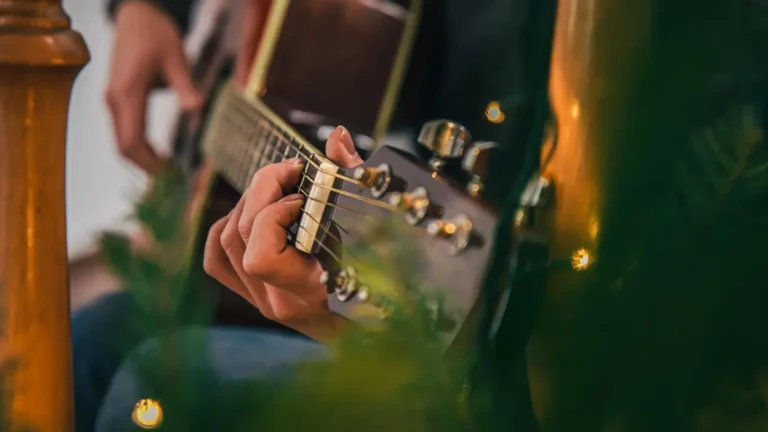The Setar is a stringed instrument widely used in Persian music. It is a member of the lotus family, with a pear-shaped body and a long neck. Setar has a unique voice that is both soothing and captivating. This article will explore the Setar’s history, construction, tuning, and playing and provide tips for learning popular Setar music.
History of Setar
The origins of Setar can be traced back to 18th-century Iran. The instrument was initially used for religious purposes by Sufi mystics and later became popular in secular music. Since then, the Setar has become an integral part of Persian music and is used in various genres, including classical, folk, and pop music.
Structure of Setar
A star is a small musical instrument made of wood. The soundboard is made of thin wood, and the frame is made of mulberry or walnut. The neck is made from a combination of hardwood and softwood. The fingerboard is usually made of ebony or rosewood. The instrument has four strings made of silk, nylon, or steel. The strings are attached to the tuning pegs at the top of the neck. The Setar has no lines, meaning the player must use his ear to find the right notes.
Is it hard to learn Setar?
Learning to play the Setar can be difficult, especially for beginners who don’t know strings. But with consistent practice and dedication, anyone can learn to play the Setar and master it over time. It is essential to have an excellent teacher to guide you through the process and help you understand the proper techniques and basics of playing the Setar.
Setar Lesson
Learning to play the Setar requires patience and dedication. If you’re a beginner, starting with the basics is essential. The first step is to find a good Setar course. You can find Setar courses online or in person. You can also find Setar tutorials on YouTube. It would help if you took Setar lessons from a professional instructor to ensure you learn the correct technique.
Start with the basics, like learning to hold a setar and pluck strings.
- Practice regularly to improve your skills.
- Don’t rush the lessons. Take your time and learn each step carefully.
- If you have problems with a particular class, don’t give up.
- Keep practicing until you get the hang of it.

Setar Tutorial
If you want to learn how to play Setar, many resources are available to help you get started. You can choose the best method, from online tutorials to offline classes. Here are some options to consider.
-
Online Setar tutorials:
YouTube: YouTube is an excellent resource for learning how to play Setar. There are many channels dedicated to teaching beginners the basics of the instrument. You’ll find videos on setting up a Setar, playing simple tunes, and advanced techniques. Some popular Setar YouTube channels are “Persian Setar Lessons,” “Mehrani Setar Lessons,” and “Saeed Kamjoo Setar and Tanbur Lessons.”
Online Courses: There are also many online courses available that provide in-depth Setar tutorials. These courses usually include video lessons, notes, and exercises. Some popular online Setar courses include “Setar Lessons with Hossein Alizadeh” and “Persian Academy of Music Setar Course.”
-
Offline Setup Tutorials:
Private Lessons: Setar’s private lessons are an excellent option for personal instruction. You can find Setar teachers in many cities around the world. Find music schools or individual teachers offering Setar lessons in your area.
Group classes: Another option is to join a Setar class. Group lessons are an excellent opportunity to learn from an instructor and interact with other Setar players. Group lessons can be found in music schools, community centers, and cultural organizations. No matter your chosen method, learning to play Setar takes time and dedication. With consistent practice and the guidance of a professional teacher, you can develop your skills and create beautiful music.
How to Tune a Persian Setar?
Setar is a traditional Persian stringed instrument that produces a unique and mesmerizing sound. Proper fit is critical to ensuring your Setar sounds its best. In this section, we will see how to tune a Persian sitar.
- Before you begin, have a Setar tuner or a reference tone such as a piano or guitar.
- Start by loosening all the strings. You can do this by turning the pin counterclockwise.
- As soon as all the strings are loose, pull them tight again, starting with the thinnest (first string) and working your way up to the thickest (sixth string).
- Tune each string to the correct pitch. The standard tuning for the Persian group is D, G, C, D, G, and C, with the first D being the thinnest string and the second C being the thickest.
- To tune, pluck each string and listen to the sound. Adjust the stops as needed until the lines produce the correct pitch.
- Once all the strings are tuned, strum to check the tuning and make necessary adjustments.
Learn Setar Instrument
Learning to play the Setar requires patience, dedication, and practice. To know the Setar, you must start with the basics, like how to hold the instrument and pluck the strings. Once you’ve mastered the basics, you can move on to more advanced techniques, such as playing different scales and melodies. Here are some tips to keep in mind when learning the Setar instrument:
- Start with the basics and work your way up.
- Practice regularly to improve your skills.
- Listen to Setar music to better understand the instrument.
- Don’t be afraid to try different techniques and styles.

How do you play the Setar?
Playing Setar requires unique skills and techniques. To play the Setar, you have to use your fingers to pluck the strings and create different notes and sounds. It would help if you also learned to put your fingers on the lines and play different chords and melodies. To play the Setar effectively, you must understand the basics of music theory and rhythm.
Setar Music and Setar Instrument
Setar music is a popular genre of Persian music. It is known for its soothing effect on its listeners. Different types of setar music include classical, folk, and contemporary styles. The setar instrument is essential to Persian music in many traditional and modern compositions. The Setar’s unique sound and versatility make it famous worldwide among musicians and music lovers.
Final Words
Tuning a setar is an essential part of learning to play a setar. It can be not easy at first, but it gets easier with practice. The tuning process requires patience and a good ear for music. The Setar is a beautiful instrument that produces musical and soothing sounds; learning to play is a rewarding experience. Whether you are a beginner or an experienced musician, understanding the basics of Setar tuning is very important. Mrs. Padideh Ahrarnejad, with years of experience and cooperation with great music masters, teaches Setar at the Navasaz Academy. If you want to learn this beautiful and intricate instrument, her class may be just what you need.
 String Instr
String Instr Percussion Instr
Percussion Instr Wind Instr
Wind Instr Keyboard Instr
Keyboard Instr Tools
Tools Books
Books

